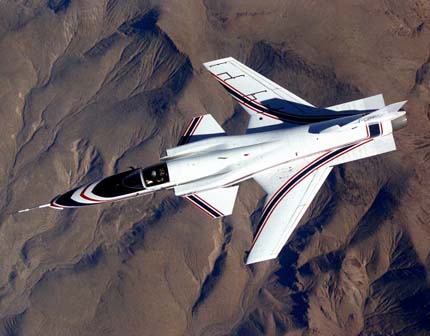HardOCP News
[H] News
- Joined
- Dec 31, 1969
- Messages
- 0
I think the program should be brought back merely because it sounds cool, but NASA has genuine reasons for reviving the division, which include developing technologies that may reduce fuel consumption and emissions.
In a budget request published this month, NASA—which, remember, has "aeronautics" in its name as well as "space"—announced plans to revive the experimental program that started after World War II and created some of history’s most remarkable aircraft. Its milestones include the X-1 (first aircraft to break the sound barrier), the X-5 (first plane with variable sweep wings), the X-13 (first use of jet power for vertical takeoffs and landings), the X-31A (could turn 180 degrees in the air), and many more.
In a budget request published this month, NASA—which, remember, has "aeronautics" in its name as well as "space"—announced plans to revive the experimental program that started after World War II and created some of history’s most remarkable aircraft. Its milestones include the X-1 (first aircraft to break the sound barrier), the X-5 (first plane with variable sweep wings), the X-13 (first use of jet power for vertical takeoffs and landings), the X-31A (could turn 180 degrees in the air), and many more.
![[H]ard|Forum](/styles/hardforum/xenforo/logo_dark.png)


